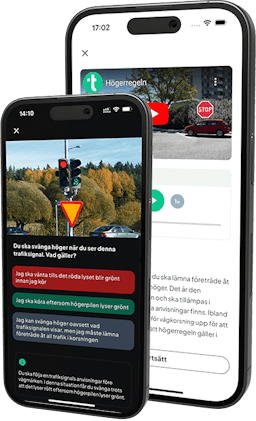Obligations
If you are involved in an accident, then you have certain obligations as a road user. It doesn’t matter whether it was you that caused the accident or whether you were merely a witness; you still have obligations:
- Stay put: You should always remain at the site of an accident and help out to the best of your ability. There may be injured people who need your help or vehicles that have to be moved.
- Leave your details: You must always give details of your name, address and information about the accident to other parties involved.
- Move vehicles: Vehicles that constitute an obstacle or a danger to other road users need to be moved as quickly as possible. If somebody has been seriously injured or killed in the accident, then you should only move vehicles that constitute a danger to other drivers.
- Contact the police: If somebody has been injured (and the injury is not insignificant) or been killed in the accident, then you should contact the police by dialling 112 as soon as possible.
- Property damage: If you have damaged somebody else’s property (in a car park, for example) then you should contact the owner in the first instance. If you are unable to get hold of the owner, then you will need to contact the police.
- Damage to a traffic device: If you hit or damage a road sign or any other kind of traffic device, then you should try to fix the damage in the first instance. If it is not possible to fix the damage, then you should mark out the place and contact the police.
In an Accident, Act in the Following Order
- Survey the accident site: The first thing you should do is survey the entire accident site in order to determine what should be done first. Is somebody seriously injured and in need of urgent help? Is there a vehicle in the way that constitutes a danger to other road users? Is there a risk of fire? Do the police/ambulance services need to be contacted?
- If there is a risk of fire: Turn off the ignition of vehicles involved, move people out of the risk zone and attempt to put out any fires using a fire extinguisher if there is one at hand.
- Help injured people and warn other road users: If anyone is injured, you should help them immediately. Move any vehicles that are obstructing other traffic, provided that it is possible and permitted to do so. If this is not possible, you should set up your warning triangle and turn on your hazard lights to warn other road users.
- Call 112: If necessary, you should alert the police and ambulance services by dialling 112.

In an Emergency – LBBC
LBBC (Life-threatening situation, breathing, bleeding, circulatory shock) is a memory device that you can use to remember how, and in what order, you should help injured people who require urgent assistance:
Life-threatening situation
All injured people who are in a life-threatening situation will need to be moved immediately. Example: If the injured person is at risk of being run over or drowning.
Breathing
Check that the person is conscious and breathing. If the person is unconscious, you should begin by opening their airways. Do this by carefully placing one hand on their forehead and two fingers under their chin, then gently tilting the head back. Check their breathing by listening to their breath and checking to see whether or not their chest is moving. If the person is breathing normally, then place them carefully in the recovery position.
If they are not breathing or if their breathing is irregular, dial 112 and perform cardiopulmonary resuscitation (CPR).

Bleeding
In the case of severe bleeding, you should try to place the injured body part as high up as possible. Apply a tourniquet to the wound to stop the bleeding. If you do not have a tourniquet at hand, you can use two ordinary pieces of fabric; place one over the wound and tie the other one around it.
Circulatory shock
If the injured person loses a lot of blood, they may suffer from circulatory shock. This is a life-threatening situation.
Common symptoms: The person is confused, pale, clammy, cold and will have a rapid and weak pulse. It is also common for the person to feel thirsty.
Actions:
- Put the person into the recovery position with their head low and legs elevated.
- Use a blanket or similar to keep them warm. • Talk to them calmly and reassuringly.
- Stop any bleeding.
- Do not give them anything to eat or drink!


